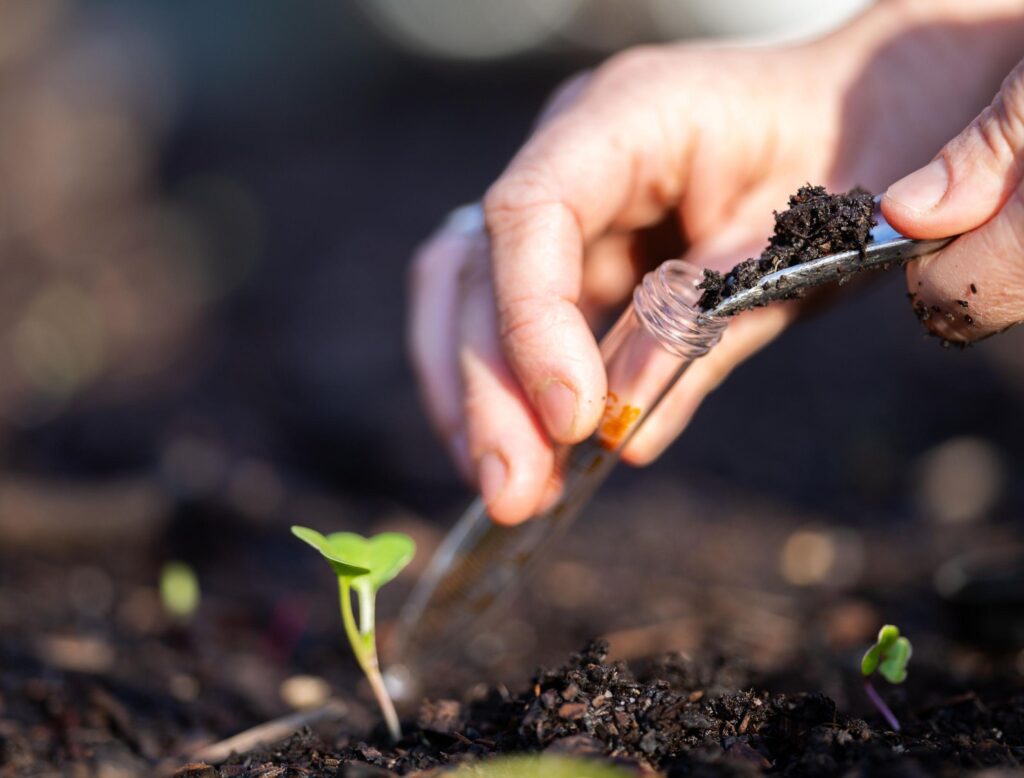Empowering Communities: Washington State’s Soil Quality Initiative
In a commendable move to enhance the safety and well-being of its residents, the Washington State Department of Ecology is launching an initiative that invites community members to assess the quality of soil in their own backyards. With growing environmental concerns surrounding toxic contaminants, this program enables citizens to conduct soil tests aimed at identifying harmful substances in their immediate environment. This initiative not only empowers individuals to take control of their ecological impact but also cultivates a collective effort towards fostering a healthier ecosystem. As the Department leads this charge for environmental responsibility, residents are encouraged to participate in this essential testing program, contributing valuable insights into pollution levels across Washington.
The Importance of Backyard Soil Testing for Public Health
The state is actively engaging its citizens by promoting backyard soil testing as a means to safeguard public health. Soil can contain various hazardous materials that pose serious risks if left unchecked. By involving residents in testing efforts, awareness about potential environmental dangers increases while encouraging community involvement and providing crucial data for health authorities monitoring contamination levels. Homeowners are particularly urged to test areas near structures or previously cultivated land where toxic pollutants may be more prevalent.
Common contaminants found in residential soils include:
- Heavy metals (such as lead, arsenic, cadmium)
- Pesticides from past gardening or landscaping activities
- Industrial waste remnants from nearby manufacturing facilities
- Bacterial hazards stemming from animal waste or decomposing organic matter
The Department provides straightforward instructions on how participants can collect and submit soil samples effectively. Through collaborative efforts with local residents, officials can pinpoint contaminated zones and devise strategies aimed at reducing risks—ultimately protecting both individual health and community welfare.
Discovering Hidden Contaminants with the Department of Ecology’s Support
This initiative offers Washington State residents an invaluable opportunity to play an active role in ensuring their surroundings remain safe. The Department of Ecology is facilitating free soil testing services designed to reveal hidden contaminants that could threaten public health. This program aims not only at empowering communities but also equipping them with necessary tools for identifying hazardous materials lurking within their properties.
If you wish to participate, here’s what you need to know about the process:
- Eligibility: Open for all Washington State inhabitants.
- Simplified Sample Collection: Participants will receive clear guidance on how best to gather and send their samples.
- Diverse Testing Focus: Analysis will encompass various pollutants including heavy metals and pesticides.
- Timely Results: Participants will receive detailed reports outlining test findings within weeks after submission.
| Toxin Type | Potential Health Effects |
|---|---|
This initiative not only raises awareness within communities but also promotes teamwork toward addressing pressing environmental challenges. By taking part in this effort, individuals contribute significantly towards creating cleaner and safer neighborhoods for everyone involved.
Best Practices for Soil Sampling and Remediation Techniques Recommended by Experts
Adequate sampling methods are vital when assessing contamination levels accurately within residential areas. Experts suggest employing a systematic approach during collection processes: select multiple sampling locations throughout your yard—especially those showing signs indicative of possible contamination such as proximity near older structures or previous chemical usage sites.
Utilize clean instruments like stainless steel shovels while wearing gloves during collection procedures; these measures help prevent cross-contamination between samples collected from different sites.
It’s crucial also that samples be taken at varying depths since most interactions occur primarily within topsoil layers where plants grow alongside pets play around frequently!
If results indicate contamination exists post-analysis effective remediation techniques should then follow suit based upon findings obtained through initial assessments! Here are some common approaches available:
-
For severe cases requiring professional intervention consult experts specializing specifically remediation practices tailored accordingly! Below summarizes popular techniques along with applicability considerations:
Treatment Method Ideal For Caveats /table
Conclusion: A Call To Action For Community Engagement In Environmental Safety Efforts!
As discussions surrounding ecological safety continue gaining momentum nationwide—the proactive steps taken by The Washington State Department Of Ecology serve as exemplary models encouraging citizen engagement towards preserving local ecosystems’ integrity! Through initiatives focused on analyzing backyard soils’ toxicity levels—residents gain opportunities safeguarding neighborhoods against potential threats posed by unseen hazards lurking beneath surface layers! Such outreach fosters communal responsibility regarding stewardship over shared environments we inhabit together daily! To learn more about participating visit The department’s official website today join forces creating cleaner safer spaces benefiting all involved!
